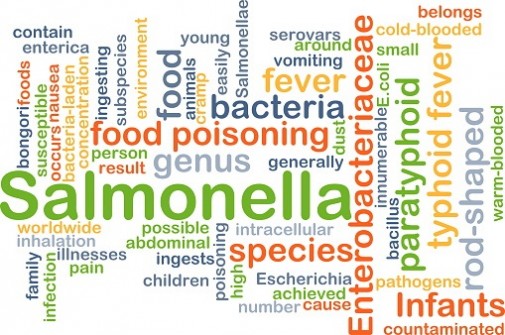5 germs that can ruin the holidays

The holiday season is almost synonymous with parties, and with these festivities comes plenty of food.
All that cooking and eating can bring with it some food safety issues.
“Home cooks often are preparing meals they don’t usually cook for larger groups than they are used to, while trying to keep food at the correct temperature for long periods of time,” says Dr. Brian Yu, infectious disease physician at Advocate South Suburban Hospital in Hazel Crest, Ill. “All these factors can set the stage for several food borne illnesses, or ‘food poisoning.’”
To help understand the risks of food poisoning, Dr. Yu shares five of the most common food borne illnesses:
- Salmonella. Probably the most well-known of the foodborne illnesses, this bacteria will make more than 1 million Americans sick this year and cause more than 19,000 hospitalizations, according to the U.S. Centers for Disease Control and Prevention. Salmonella is found in the intestinal tracts of animals. When infected feces contaminates food products and the food is not properly cooked, the bacteria can be transmitted to humans. To prevent salmonella infection, always cook meat and eggs to the suggested temperatures and be careful not to contaminate other foods with the juices from uncooked meat, poultry or eggs.
- Norovirus. Known as the “cruise ship virus,” norovirus is capable of infecting large numbers of people. The CDC rates this as the most common cause of foodborne disease in the country, affecting more than 20 million people annually. It’s is very contagious and exposures to the virus can be from an infected person, contaminated food or water or by touching surfaces contaminated with the virus. The CDC says that 70 percent of outbreaks are related to an infected food handler. Symptoms include vomiting, diarrhea, fever and muscle aches, and usually last one to days.
- Campylobacter. This is a common bacterial cause of diarrhea that sickens more than 1.3 million Americans every year. Infections are almost always isolated to a few individuals or small groups that have eaten undercooked poultry however, widespread outbreaks associated with unpasteurized milk or tainted drinking water have been reported. Symptoms include bloody diarrhea, cramping, abdominal pain and fever within two to five days after ingestion of the bacteria. The illness typically lasts about one week.
- Staphylococcus aureus. More commonly known as staph, this bacteria is often found on skin, fingernails and noses. When a person with staph on their body contaminates food, the bacteria can grow and as it does it excretes staph enterotoxin, a very common cause of food poisoning. Staph can linger in foods such as meat, poultry, eggs, dairy products, creamy pasta, potato salads and cream-filled baked goods like éclairs and cream puffs. Symptoms develop quickly after eating the contaminated food – within one to eight hours – and may include vomiting, diarrhea, nausea and abdominal cramps that last one to two days.
- Clostridium perfringens. Also called the “buffet germ” or “food service germ,” it’s associated with foods that are in chafing dishes where the temperature may not be properly controlled allowing the bacteria to grow. Clostridium perfringensis found in soil and can be part of normal intestinal bacteria, but a large number of ingested bacteria can makes people sick. Symptoms usually develop within eight to 24 hours and may include diarrhea, stomach pains, nausea and sometimes vomiting. The symptoms usually last only for a day, leaving many people to mistake it for a 24-hour flu.
To avoid food poisoning while keeping a holiday party festive, Dr. Yu recommends:
- Use a meat thermometer to confirm that meat, pork and poultry are properly cooked. Check foodsafety.gov for proper temperatures.
- Keep preparation and storage areas – countertops, stovetops, refrigerators, etc. – clean.
- Wash hands with soap and warm running water for at least 15 to 20 seconds before preparing any foods.
- Wash utensils between each use.
- Thaw meat and poultry in the refrigerator or microwave, not at room temperature. Build in time for safe thawing.
- Do not prepare food if you are sick or have any type of nose or eye infection.
- Use separate cutting boards for meats, poultry and fish.
- If you are unsure about how long perishable food, particularly meat, poultry and dairy, have been left out, throw the items away to eliminate your risk of food poisoning.
Related Posts
Comments
One Comment
About the Author
Nate Llewellyn, health enews contributor, is a manager of public affairs at Advocate Medical Group. Nate began his career as a journalist and builds daily on his nearly 20 years of writing experience. He spends most of his free time following his wife to their two sons’ various activities.


















Read this mom